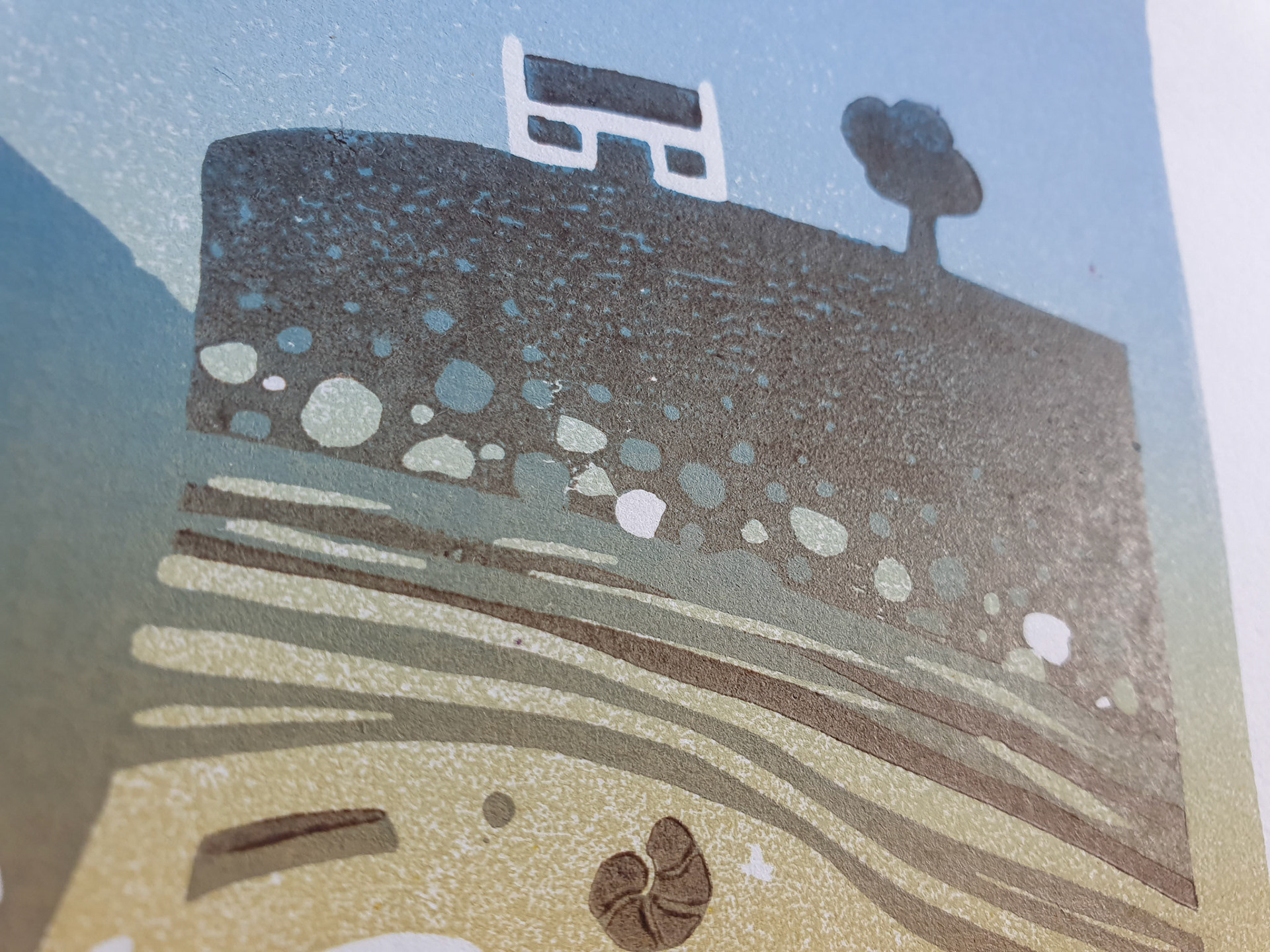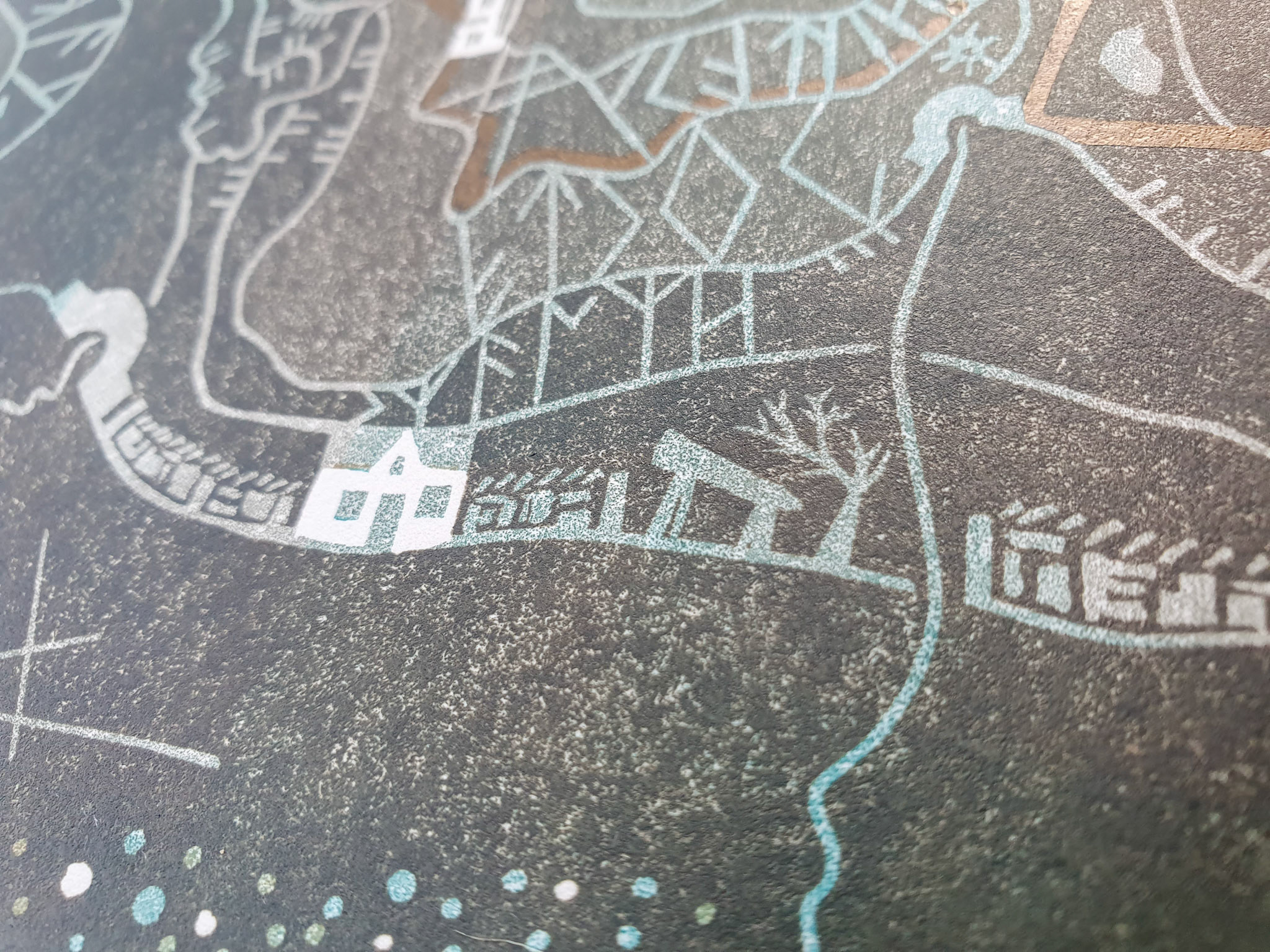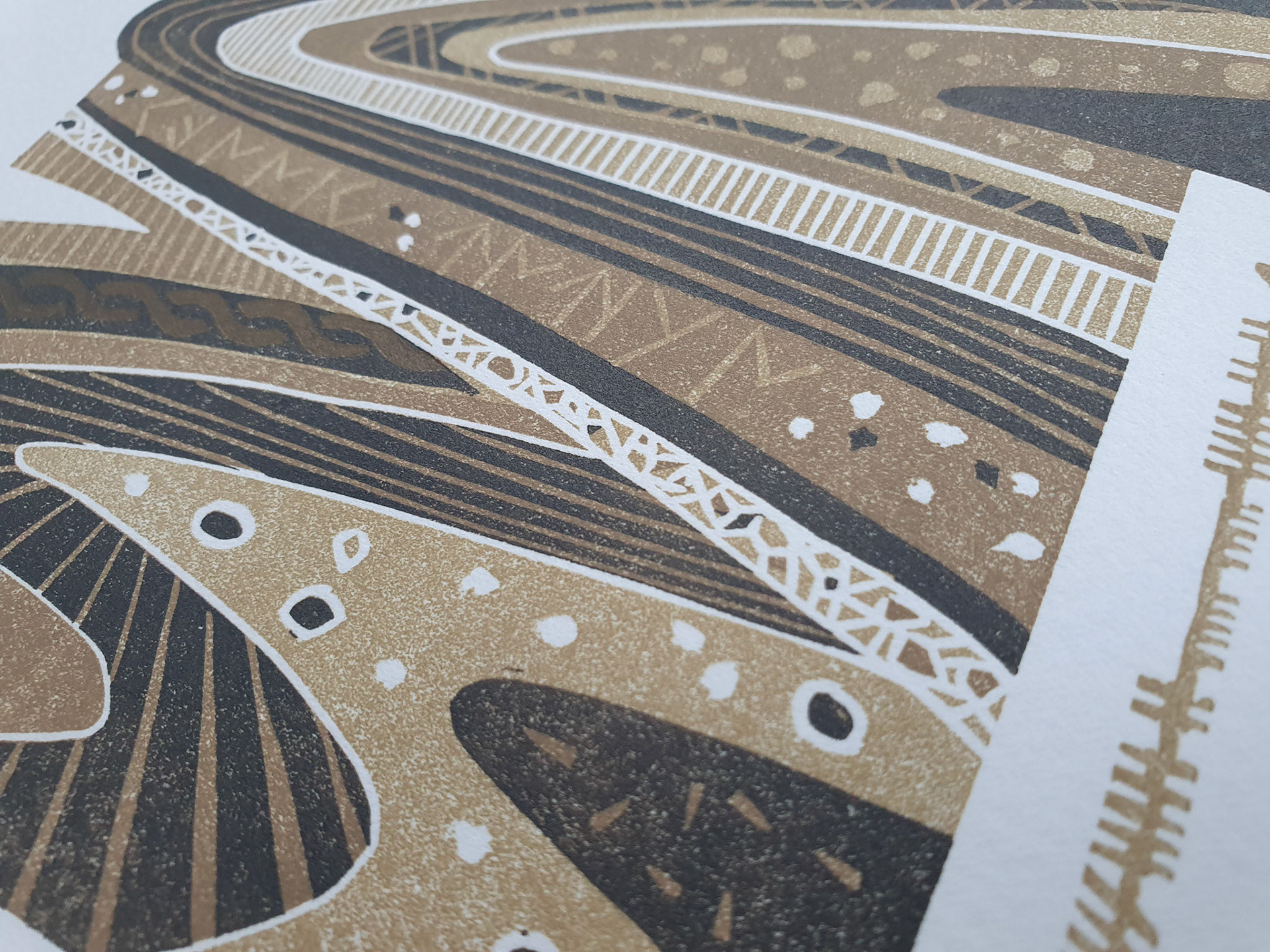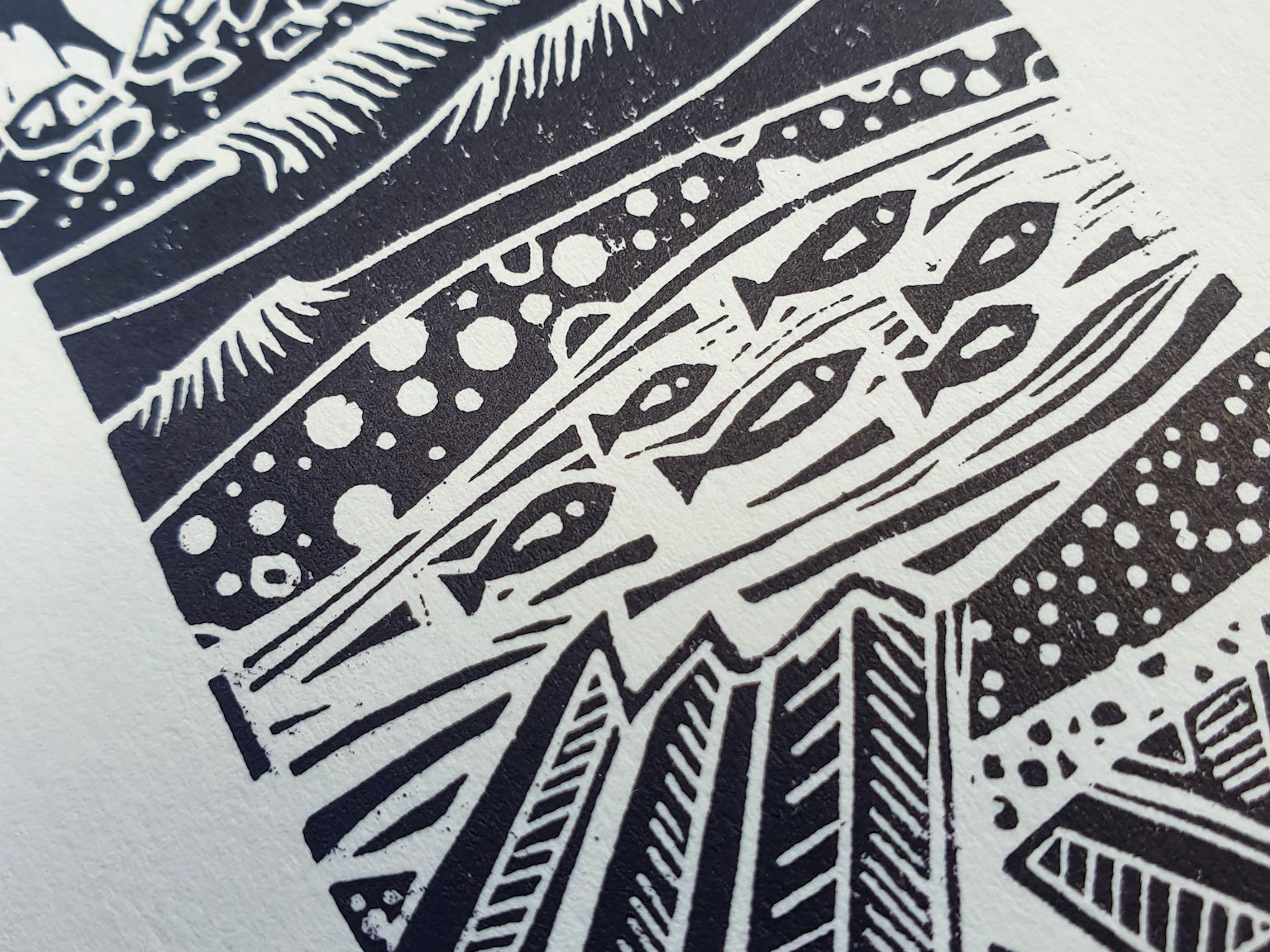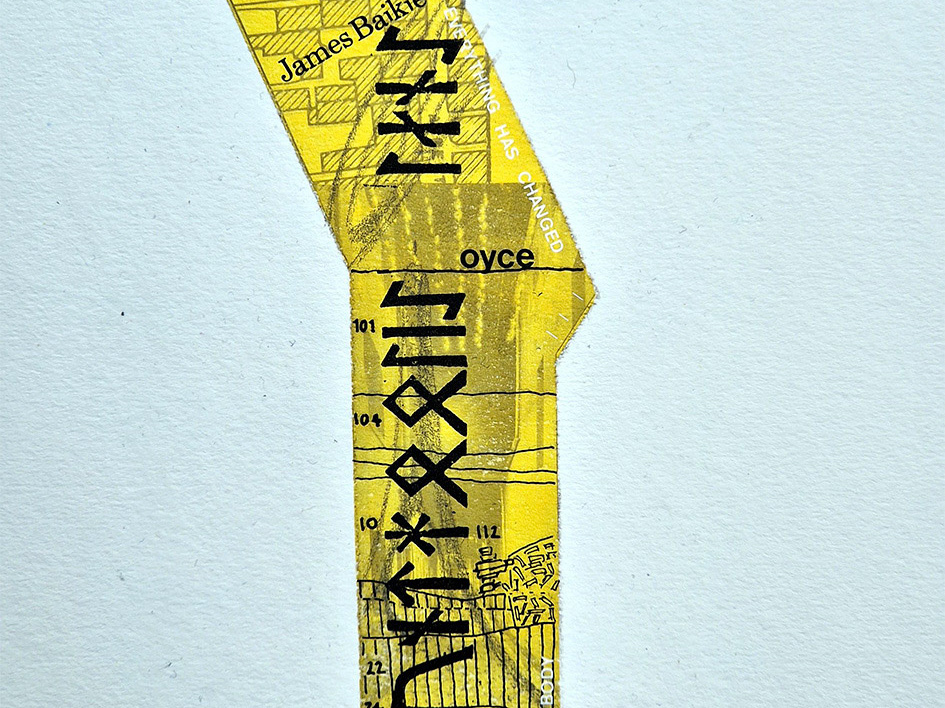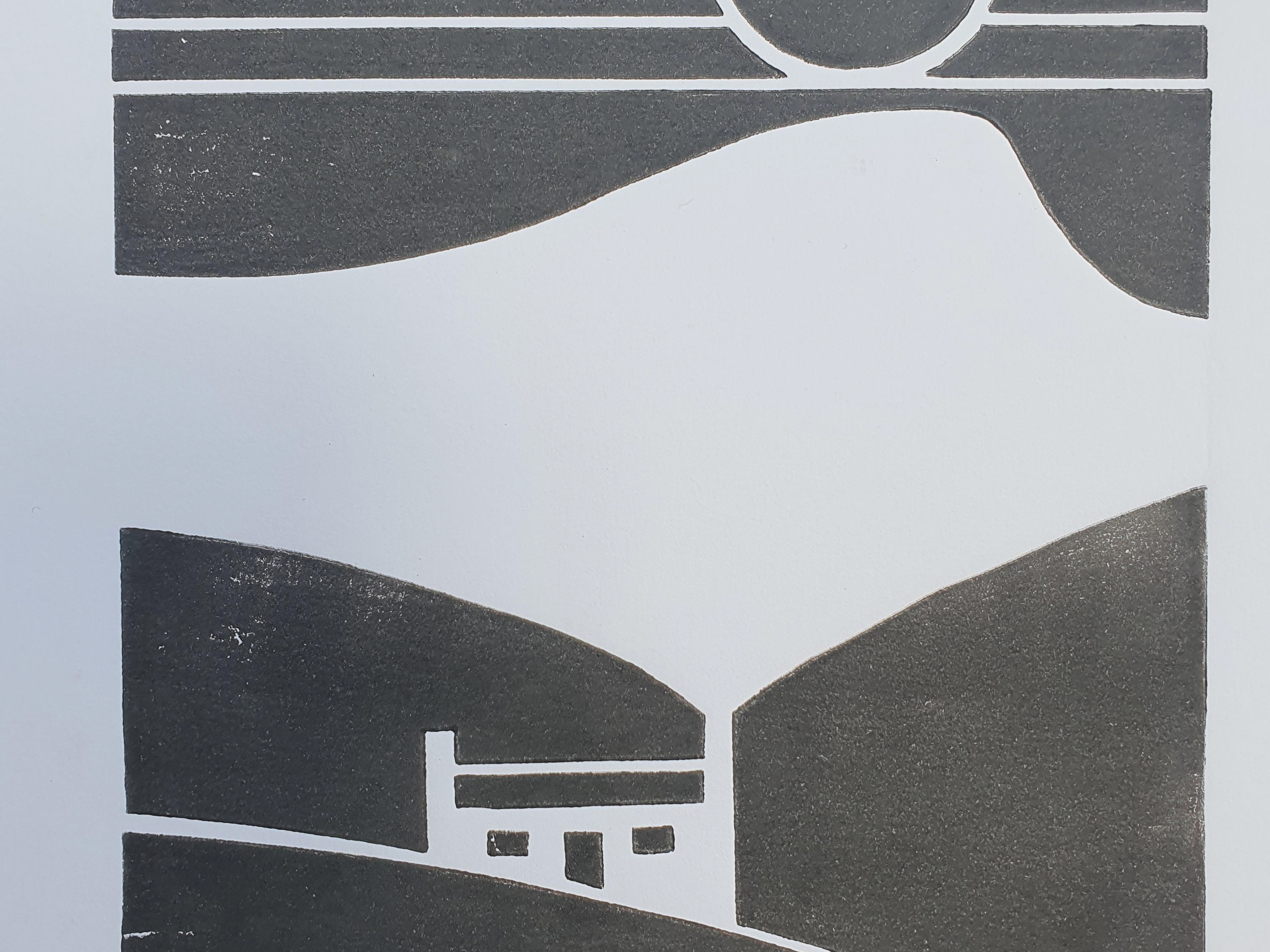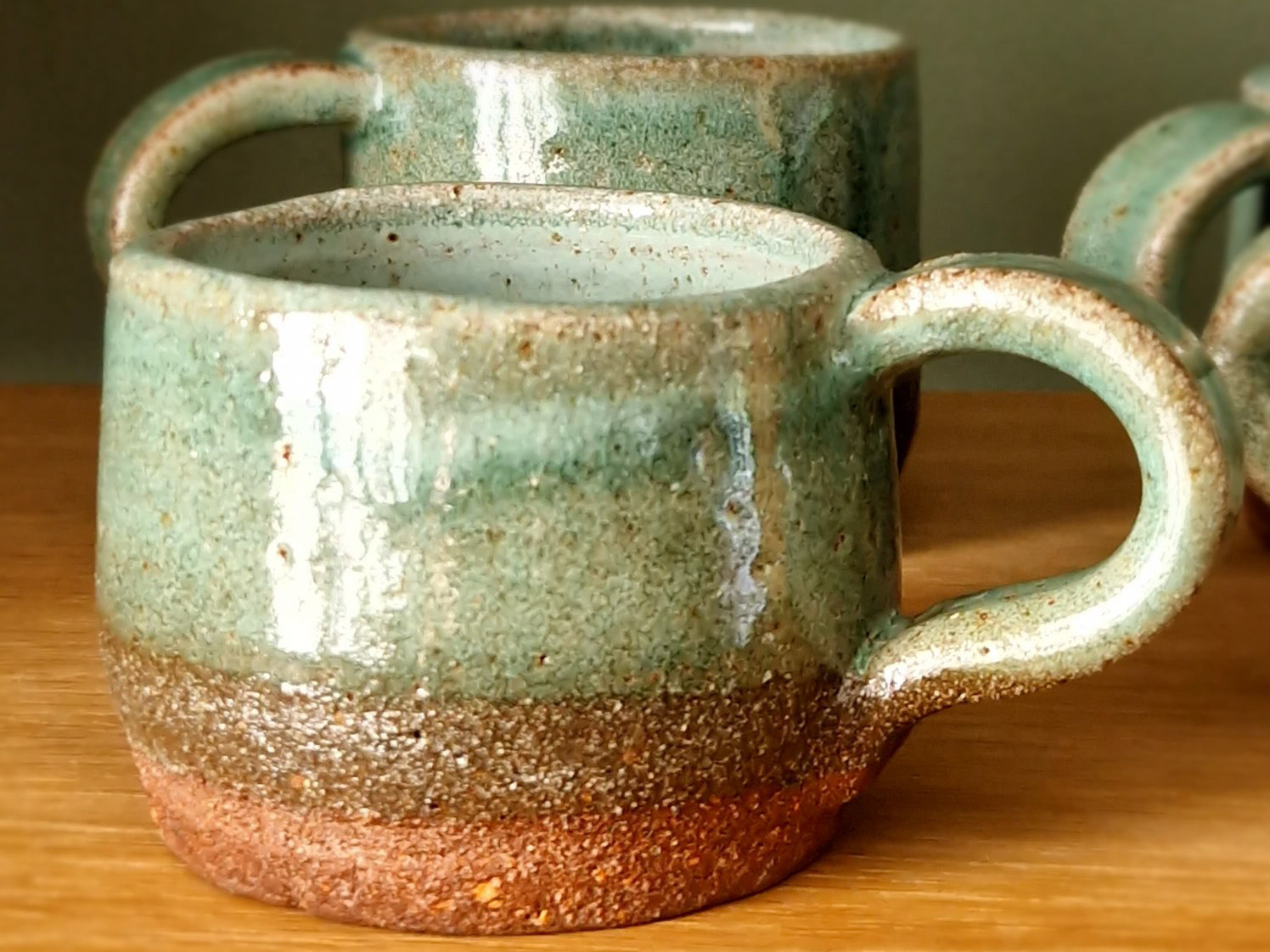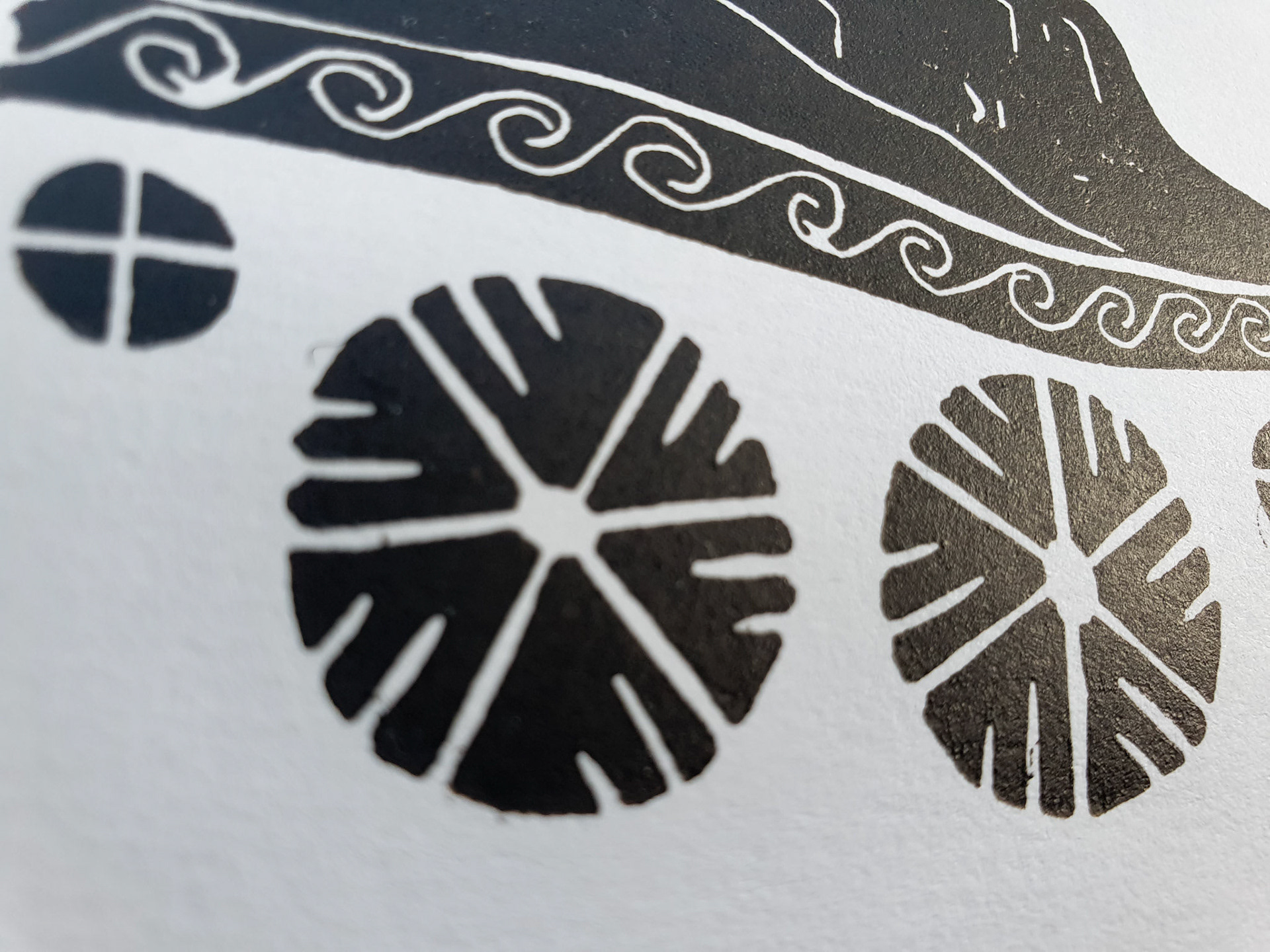Saltways: Crystallising Journeys Over Time
Exhibition on display at Lion Salt Works, Northwich, from Sep 9th 2025 – Feb 22nd 2026
Saltways, is an exhibition of my investigation into the ways salt has travelled away from Cheshire over the two-thousand-year history of the industry. Learn about where Cheshire salt has gone, how it travelled, where it goes now, and what's next for this vital ingredient of Cheshire life.


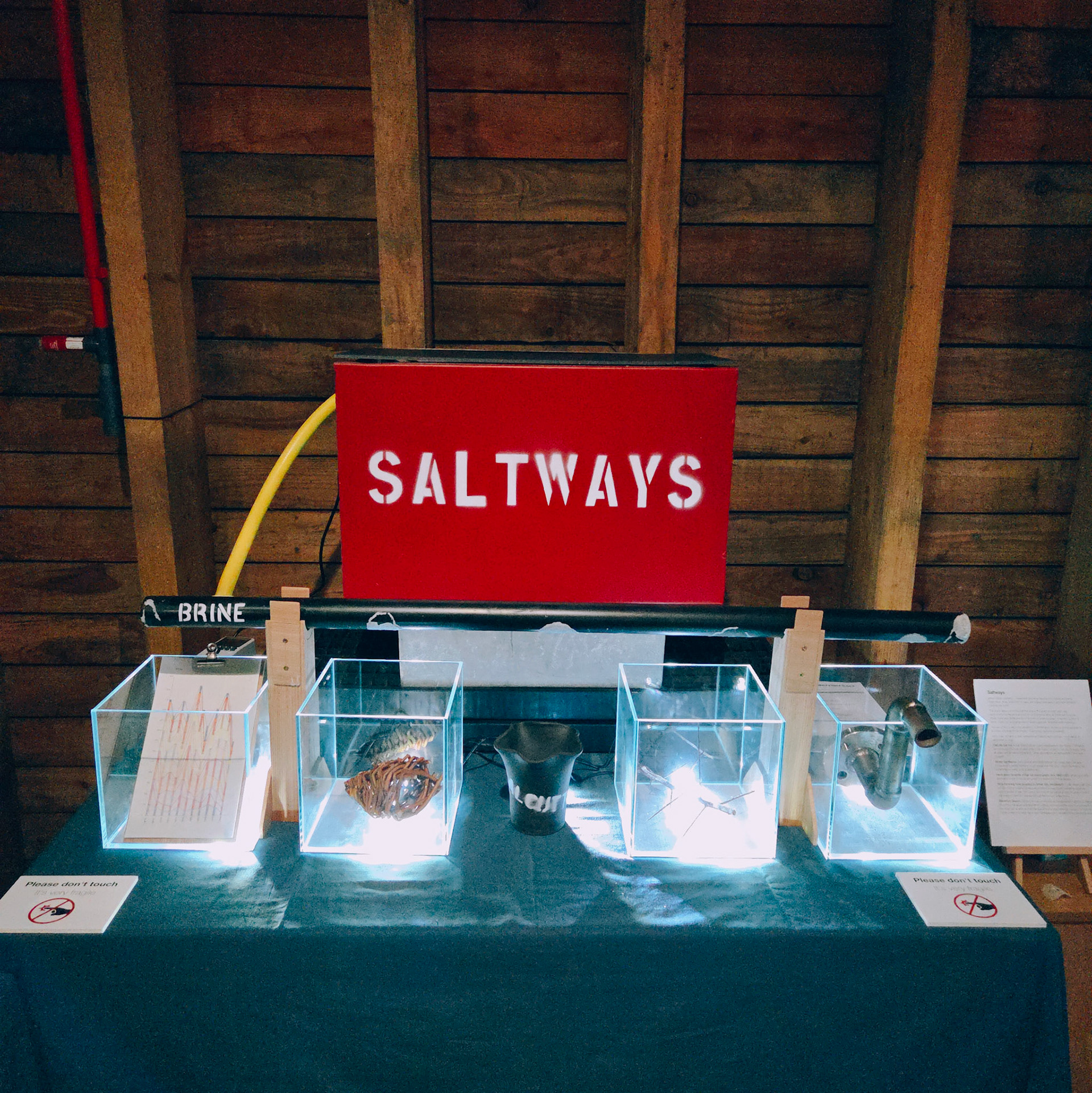



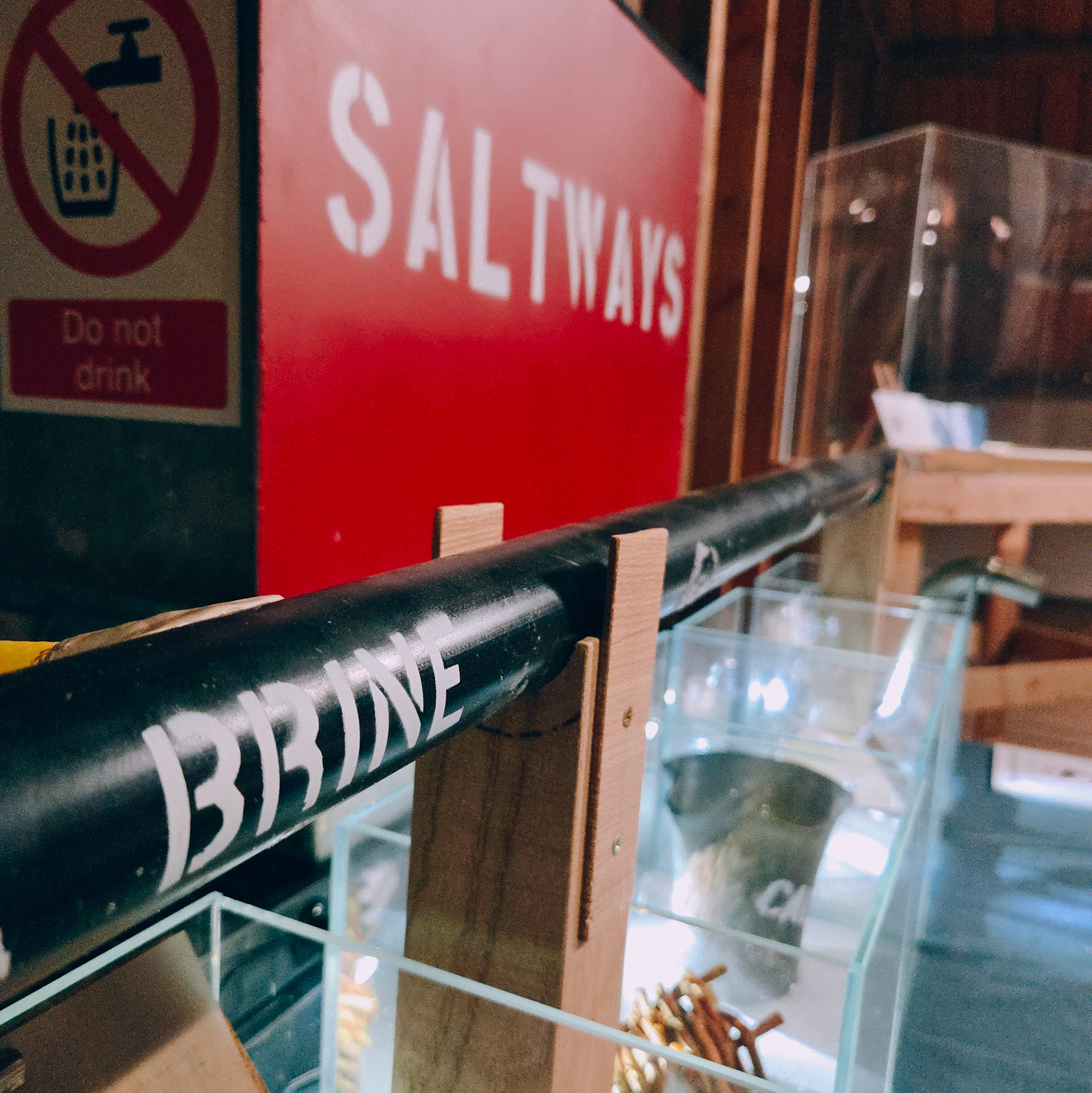
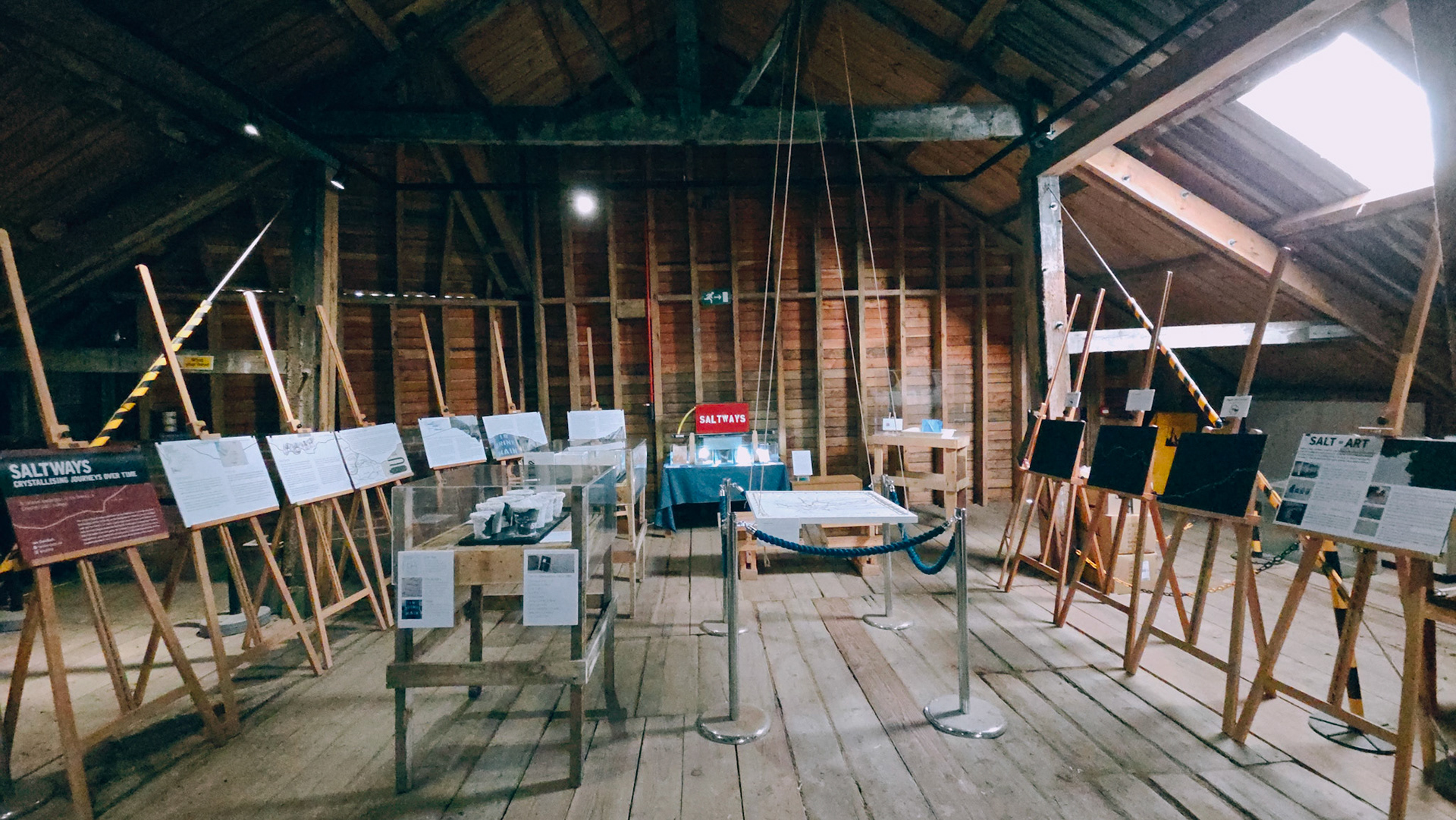
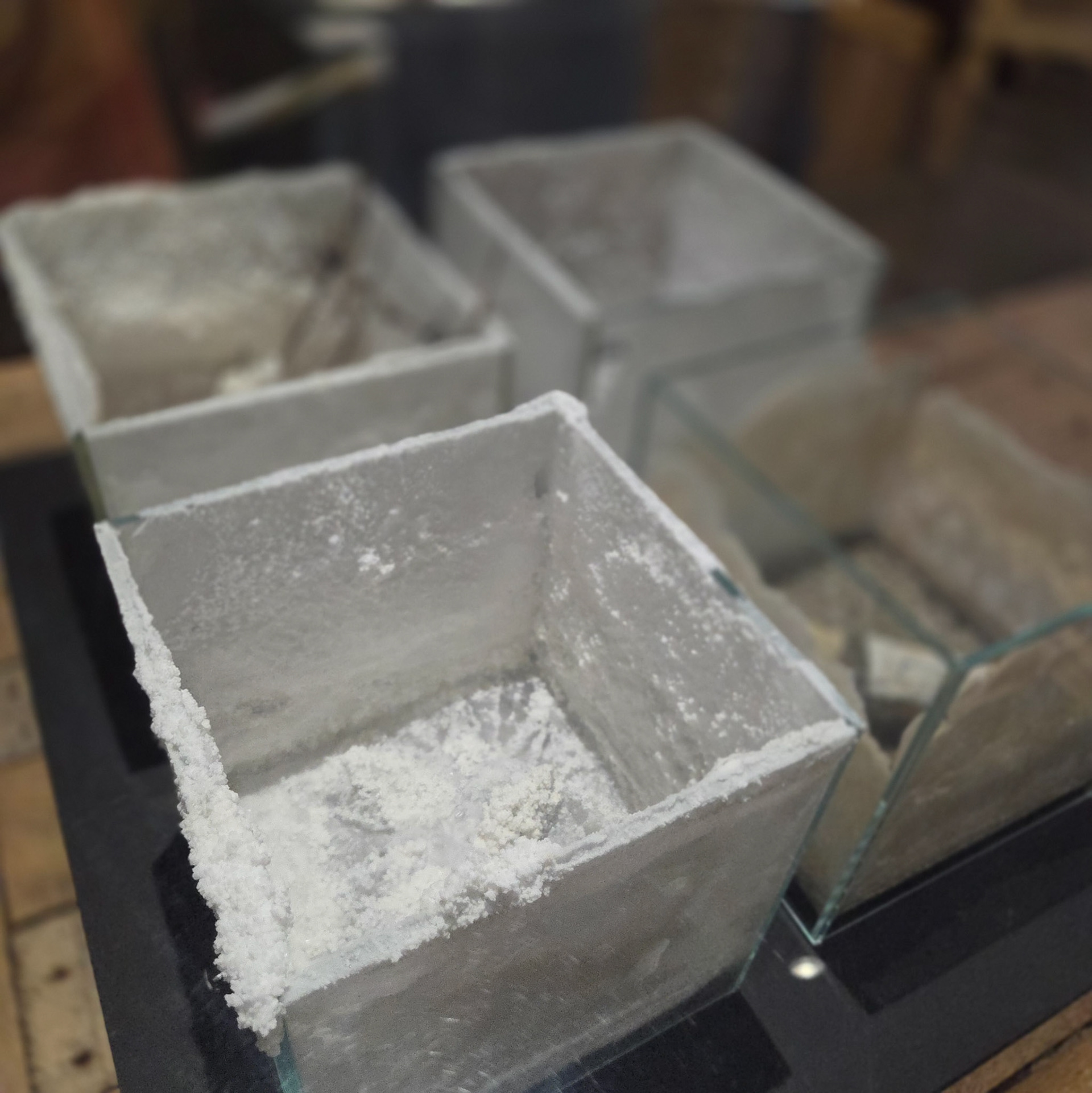
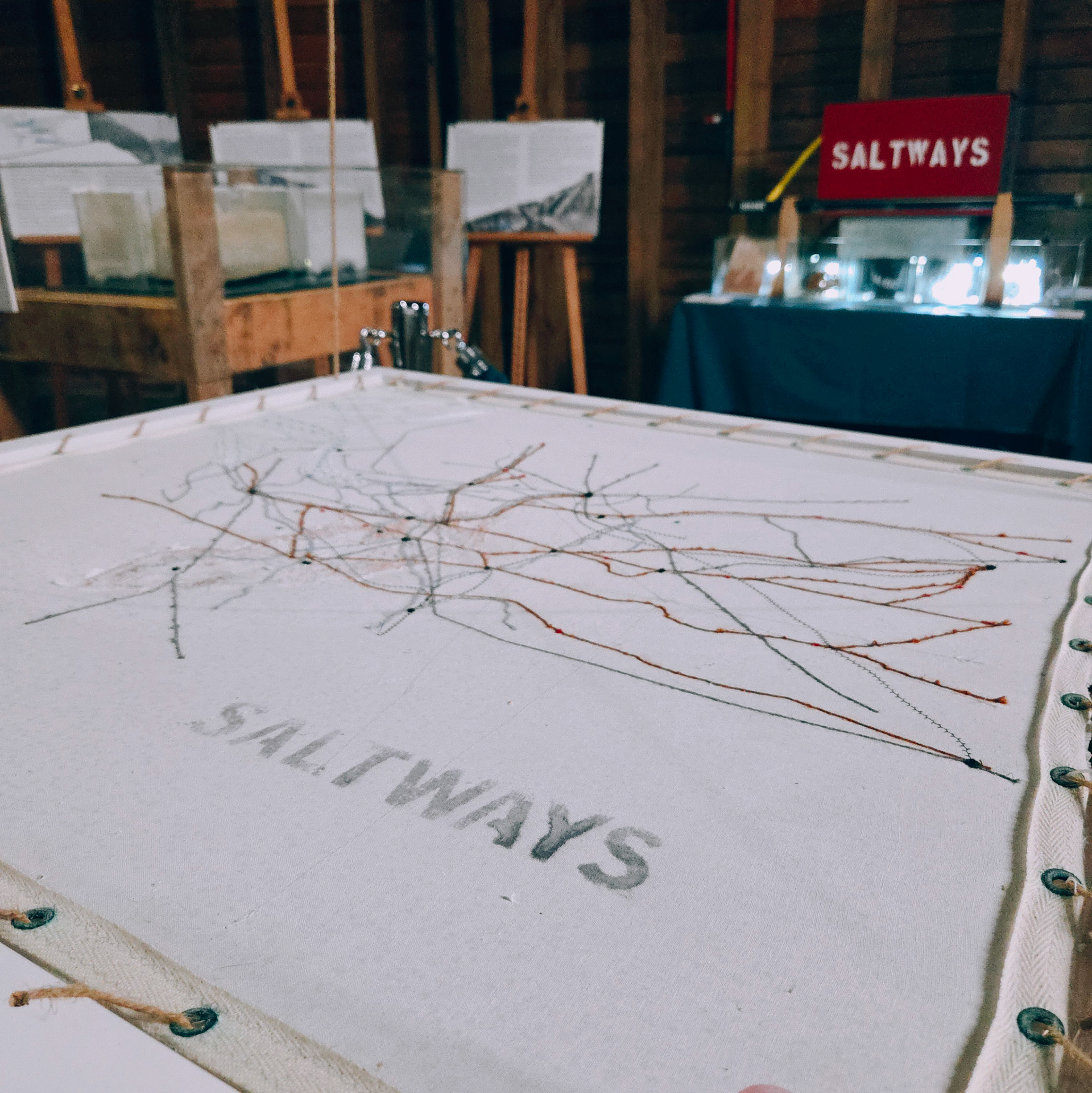


Works include:
Saltways
Mixed-media installation - Galvanised steel tank housing brine supply and pump. Digital timer, hose, drilled PVC-U pipe, elm stands, and glass cubes with ‘artefacts’ made by the artist.
The pump delivers brine through the pipe to the glass ‘crystals’ each day, representing the medieval practice of controlling the times at which salt could be made. Brine was distributed from the brine pit down a system of wooden gutters or pipes. Today, brine is transported in black pipes with stencilled white markings.
The use of time is key in the installation. In its formation, its history of manufacture, its journeys, and even in the process of extraction, patience is needed.
Each cube contains an item representing Cheshire salt’s journeys - a container, a destination, a story.
Jaggers
Sculptural ceramics - Slip coated and stencilled stoneware, salt.
Thrown stoneware pots based on the form of Iron Age salt containers traced to the Middlewich/Nantwich area, which have been found as far away as Anglesey and Nottinghamshire. Here, they are decorated to resemble modern-day pipelines and stencilled with the names of destinations of salt shipped from Herman Falk’s Meadowbank works in the period 1859-1868.
Local brine was boiled over two 5-hour periods to extract the salt to fill the pots. Historically, ‘jaggers’ transported salt in packhorse trains. The piece represents the longevity of Cheshire’s salt industry, its global reach at the height of British colonial rule, and its role in the early stages of globalisation.
Salt Cubes
Mixed-media sculptures. Glass cubes, brine-soaked ‘artefacts’ hand-made, or sourced, by the artist.
Coffin. “Through Rudheath… many a load of salt was smuggled. The story is told that the authorities became concerned about an apparently high death-rate in this district, for funerals were ever travelling over its rough tracks. Some bright constable… decided to investigate and found a coffin full of salt.”
Coward, T. A. (1932). Cheshire Traditions and History, p. 214
Coward, T. A. (1932). Cheshire Traditions and History, p. 214
Blackthorn. Samuel Ikin was a lumpman at Meadowbank Salt Works. Before Christmas, he would take blackthorn cuttings from beside the canal and dip them in the open pan so that they became encrusted with salt crystals. He took them home, where they were set on the mantlepiece as a sparkling white Christmas tree.
Salt Wagons. After the advent of the railways, salt could be transported more quickly over land, loaded in covered 12-ton wagons made from 3-inch-thick red pine boards, tarred and painted with brand names – Seddon’s, Falk, Sifta, Saxa, Salt Union.
Rag Rug. On the Weaver flats, boats used to transport cargoes of salt to the docks at Liverpool and return with coal to fire the salt-making pans, people would use old sacks as backing to make rag rugs to warm the floor of the boats.
Saltways Map
Mixed-media sculpture - Brine-soaked, hand and machine sewn fabric map, wooden frame.
Showing routes of various eras, and find spots of Iron Age VCP fragments, the map is attached to a wooden frame with jute cord through eyelets to reference the sails of the ‘flats’ that transported salt on the River Weaver.
The map was on display at Murgatroyd’s Brine Pumps throughout the summer of 2024, fitted to a steel salt-making pan filled with brine from Nantwich, which soaked into the hanging fabric strips and hardened the map with salt.
Sketchmaps: Saltways
Mixed-media artwork - Routed board, acrylic, and evaporated brine.
This piece represents paths I have followed in Cheshire during my research that trace the journeys of salt. The channels are filled with local brine and left to slowly evaporate representing the accumulation of presence on the saltways from repeated journeys over millennia. Called sketch maps because they aren’t detailed maps attempting to control or accurately define space but are lines of memory, “drawn along, in the evolution of a gesture” (Ingold, T. (2014). Lines, p. 87).

